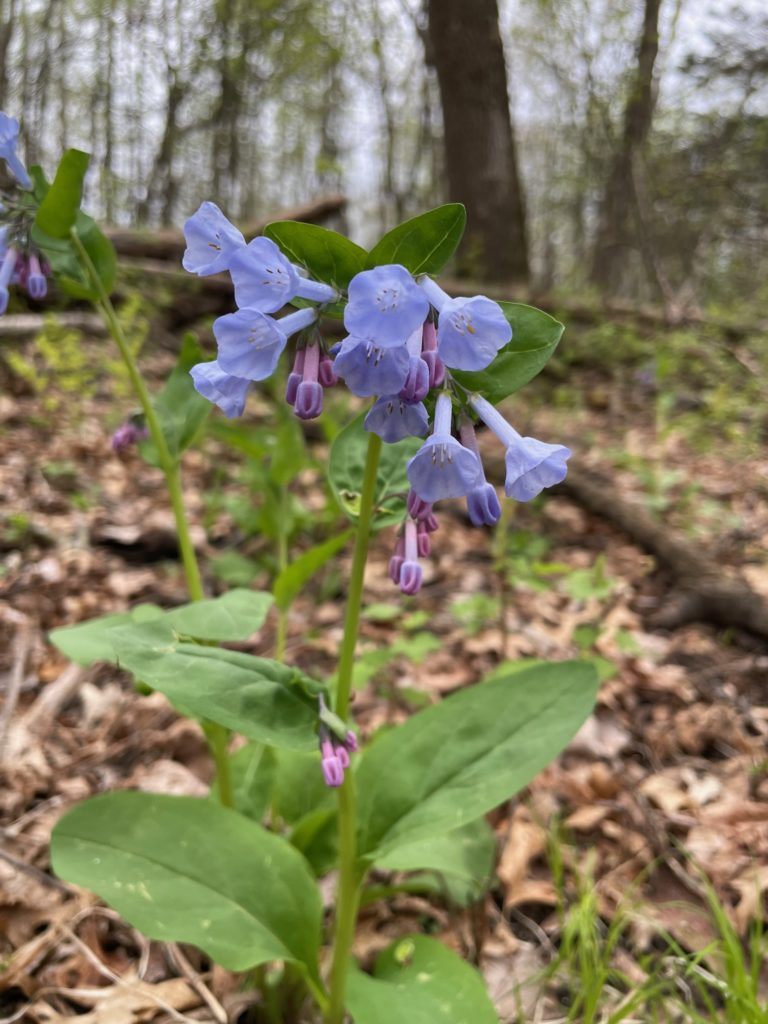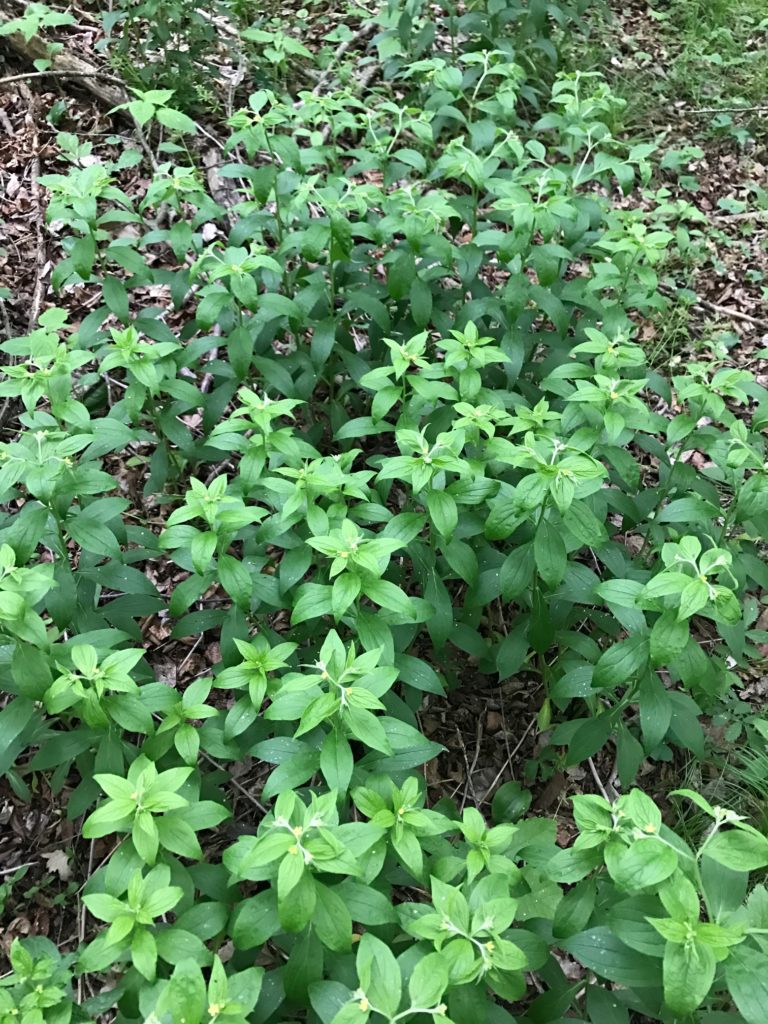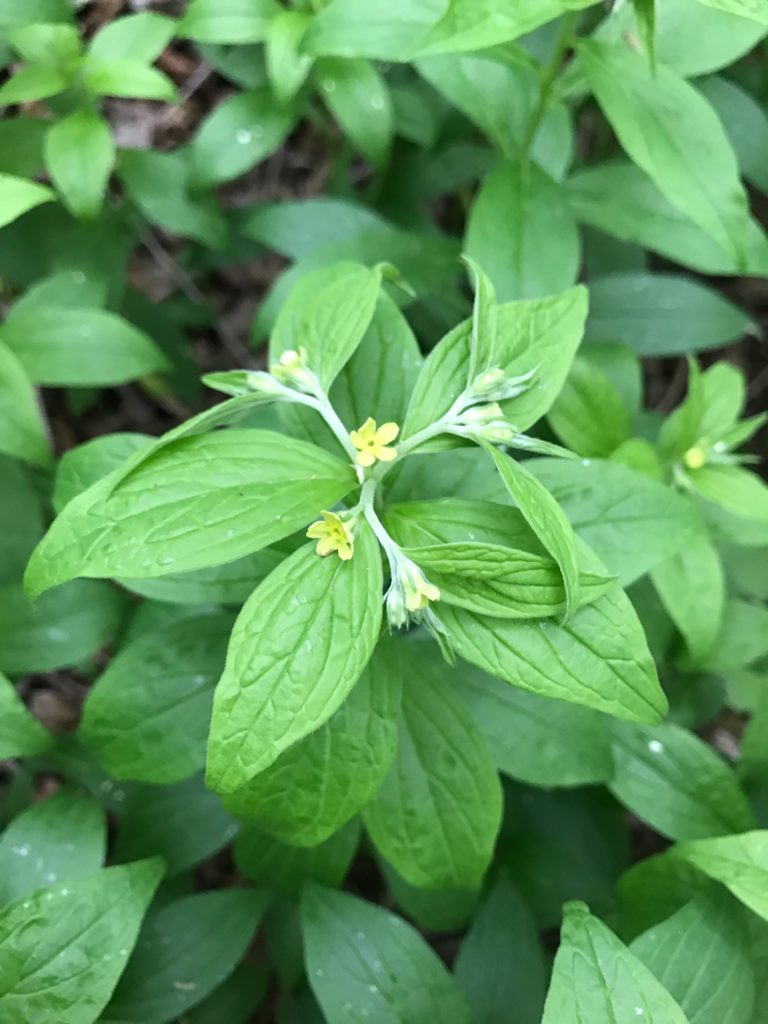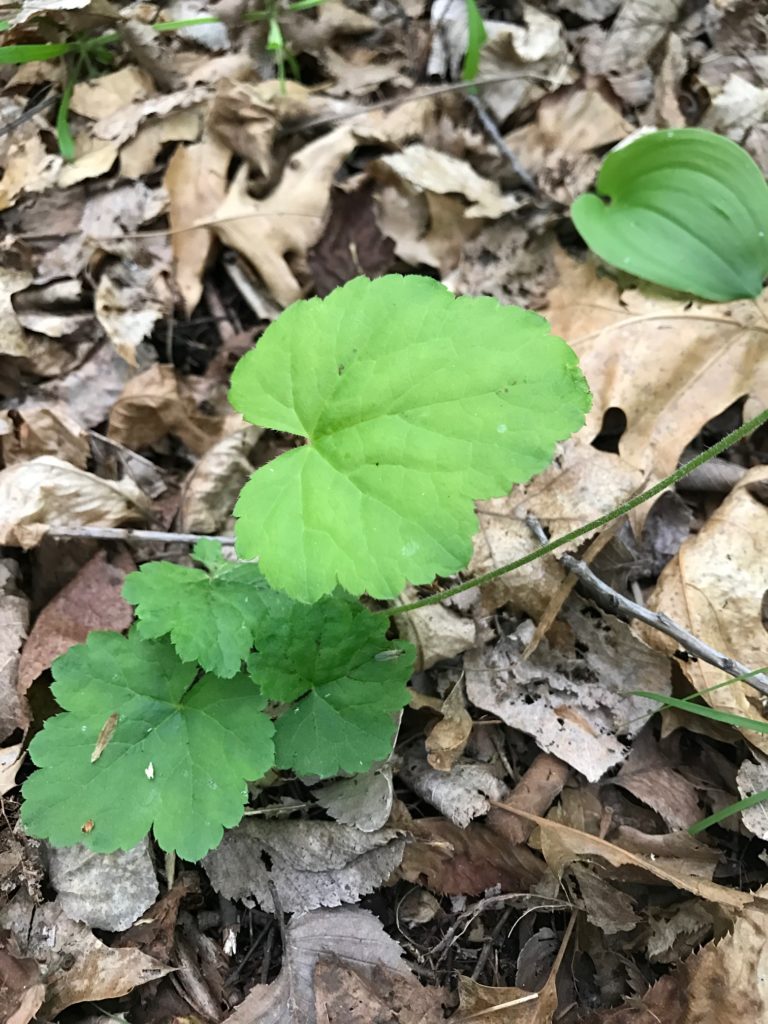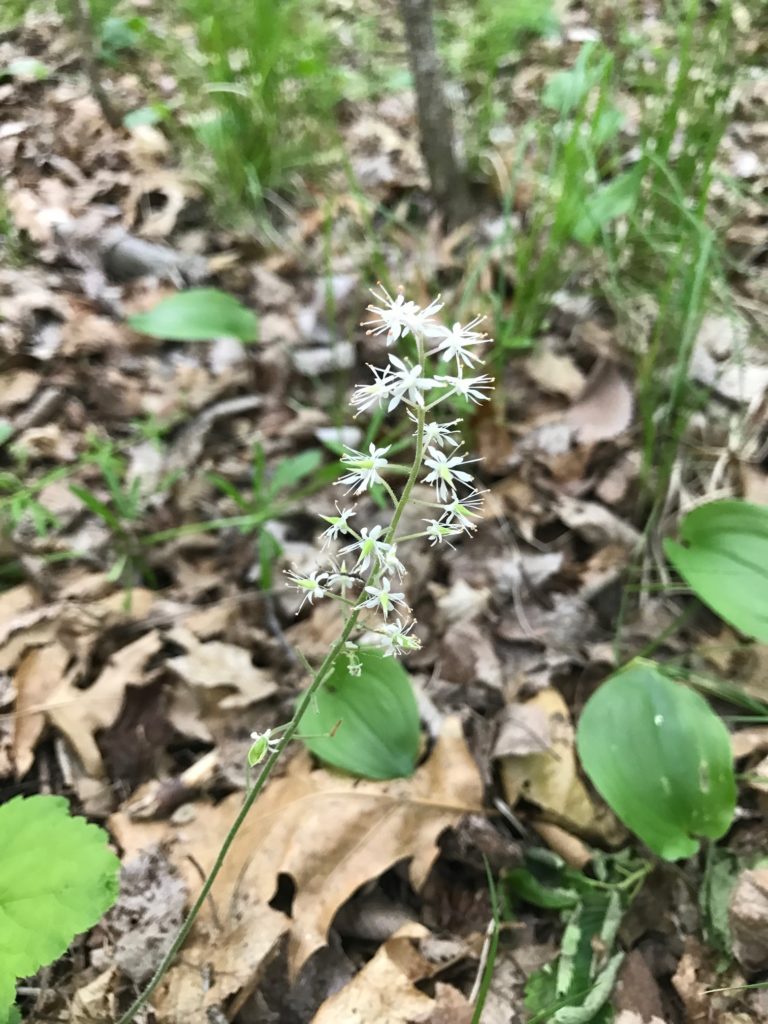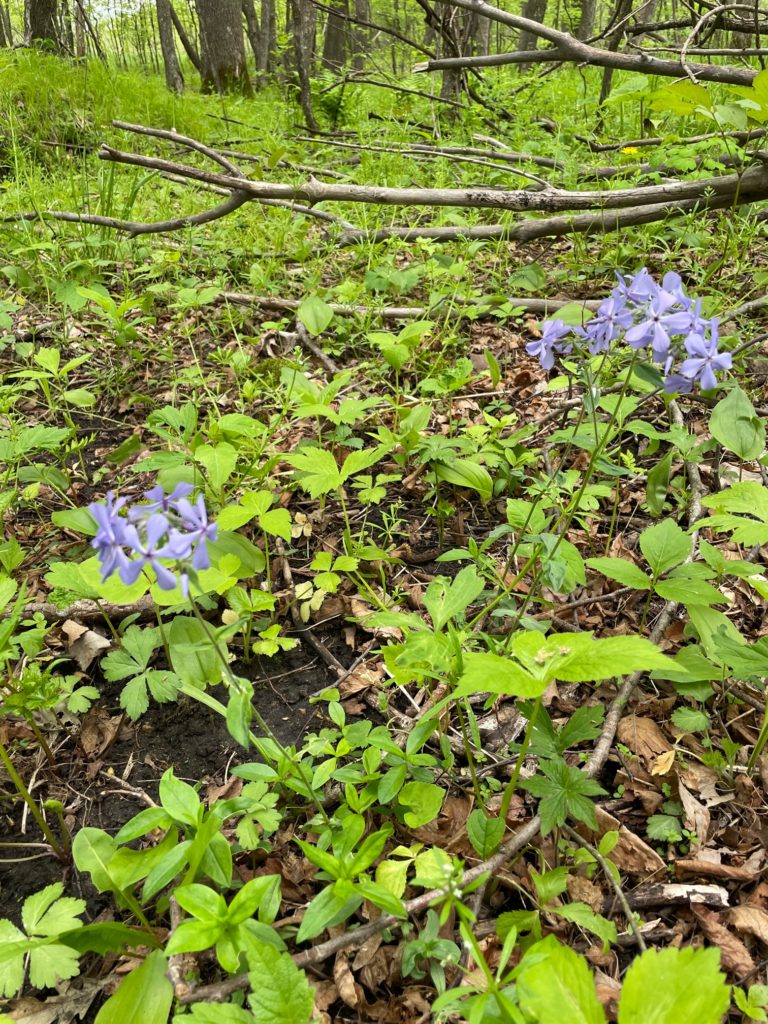
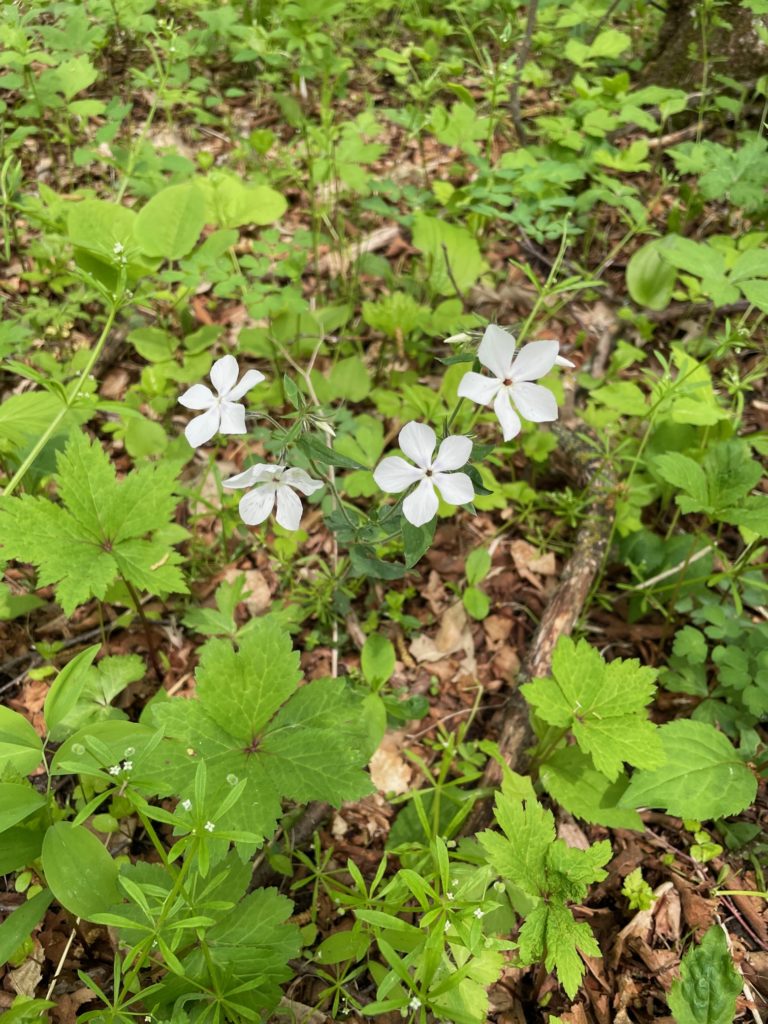
Native To State: YES
Naturally Occurring: NO
Description
Appearance: Phlox divaricata is a herbaceous perennial known for its trailing stems and clusters of fragrant, blue to lavender flowers.
Leaves: The leaves are opposite, lance-shaped, and often have a glossy appearance.
Flowers: The plant produces clusters of fragrant, blue to lavender, five-petaled flowers.
Habitat: It is commonly found in woodlands, especially in moist, shaded areas.
Distribution: Wild blue phlox is native to eastern North America.
Occurrence
Planted in back 40 woods, fern area, and brush island




